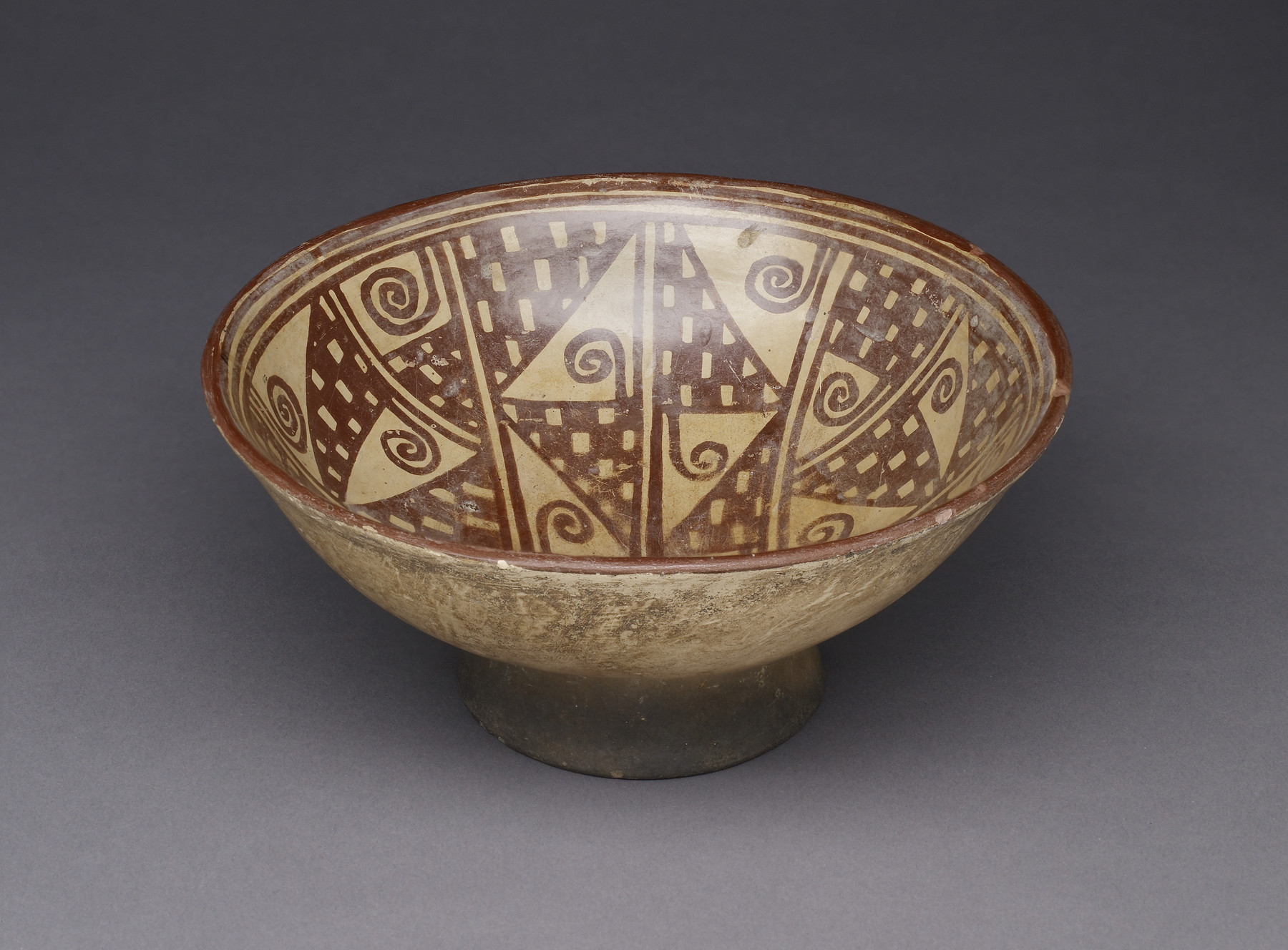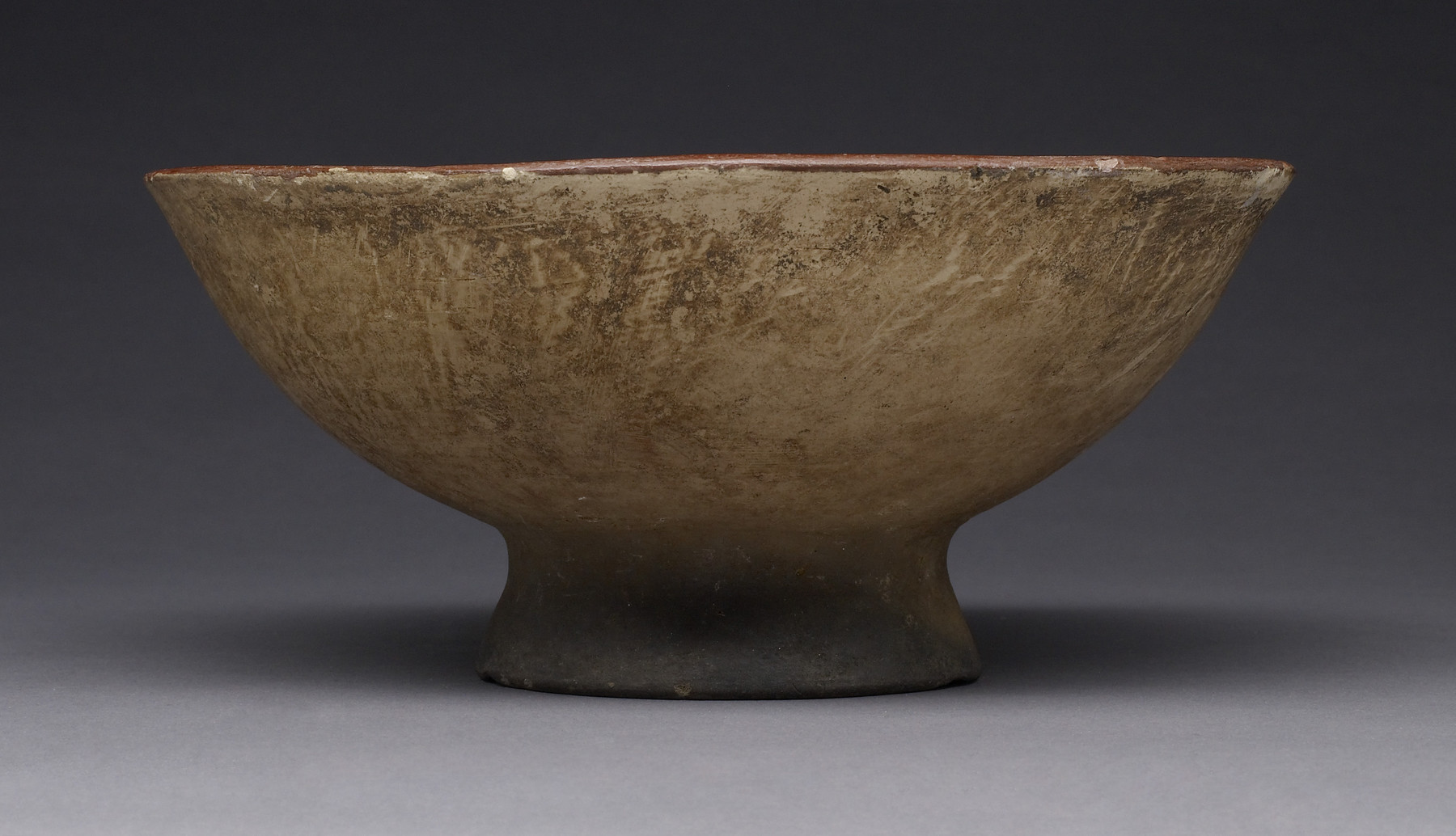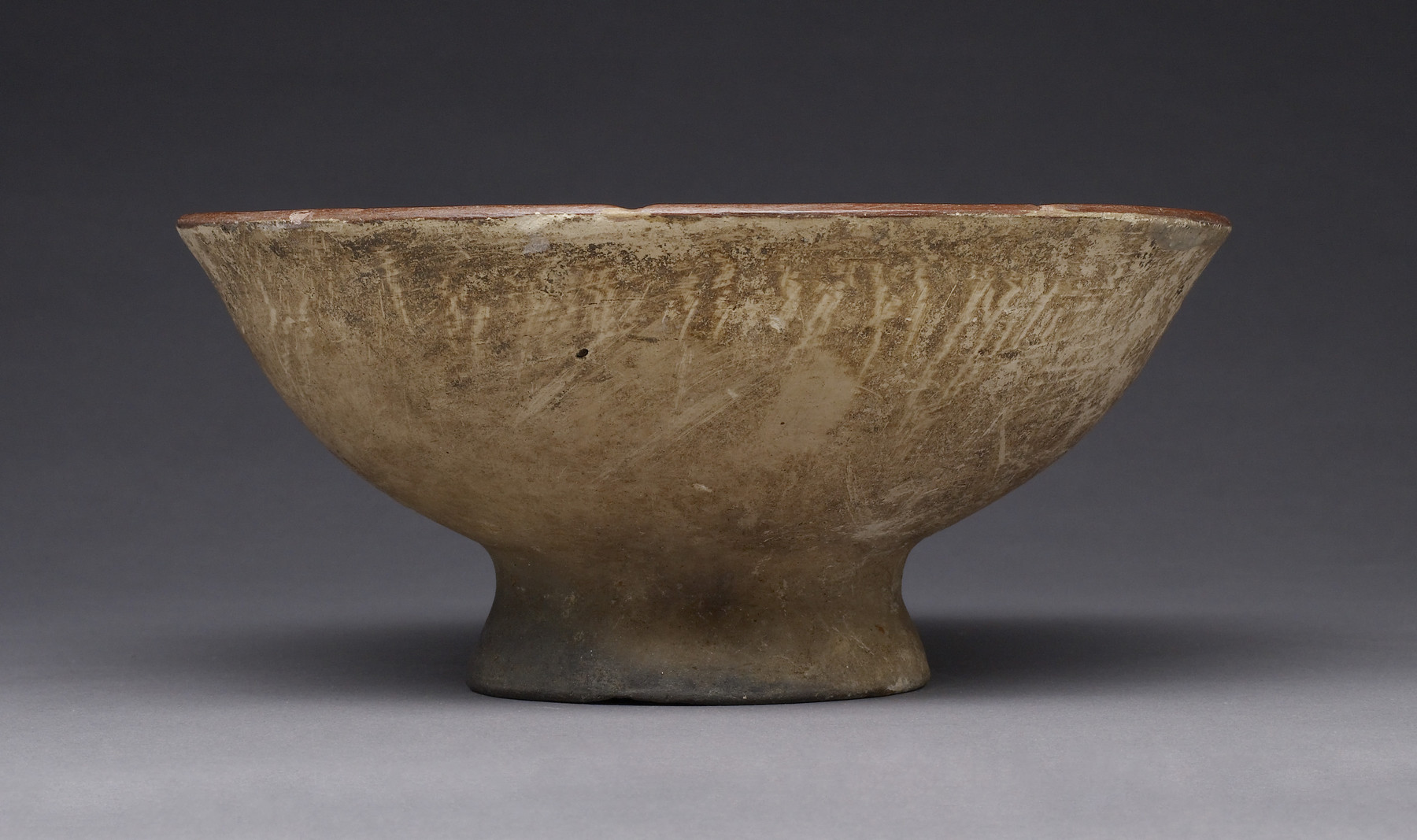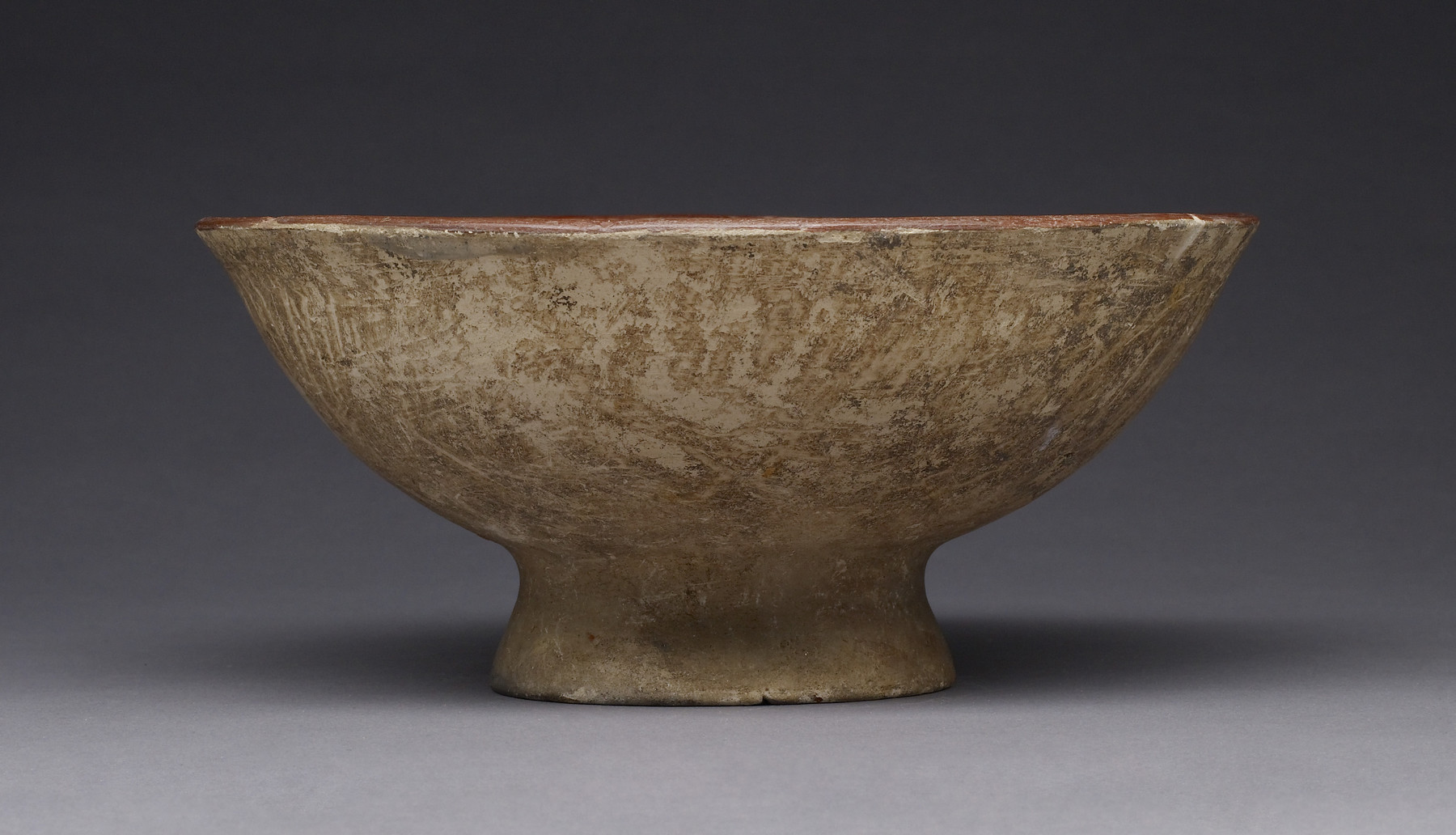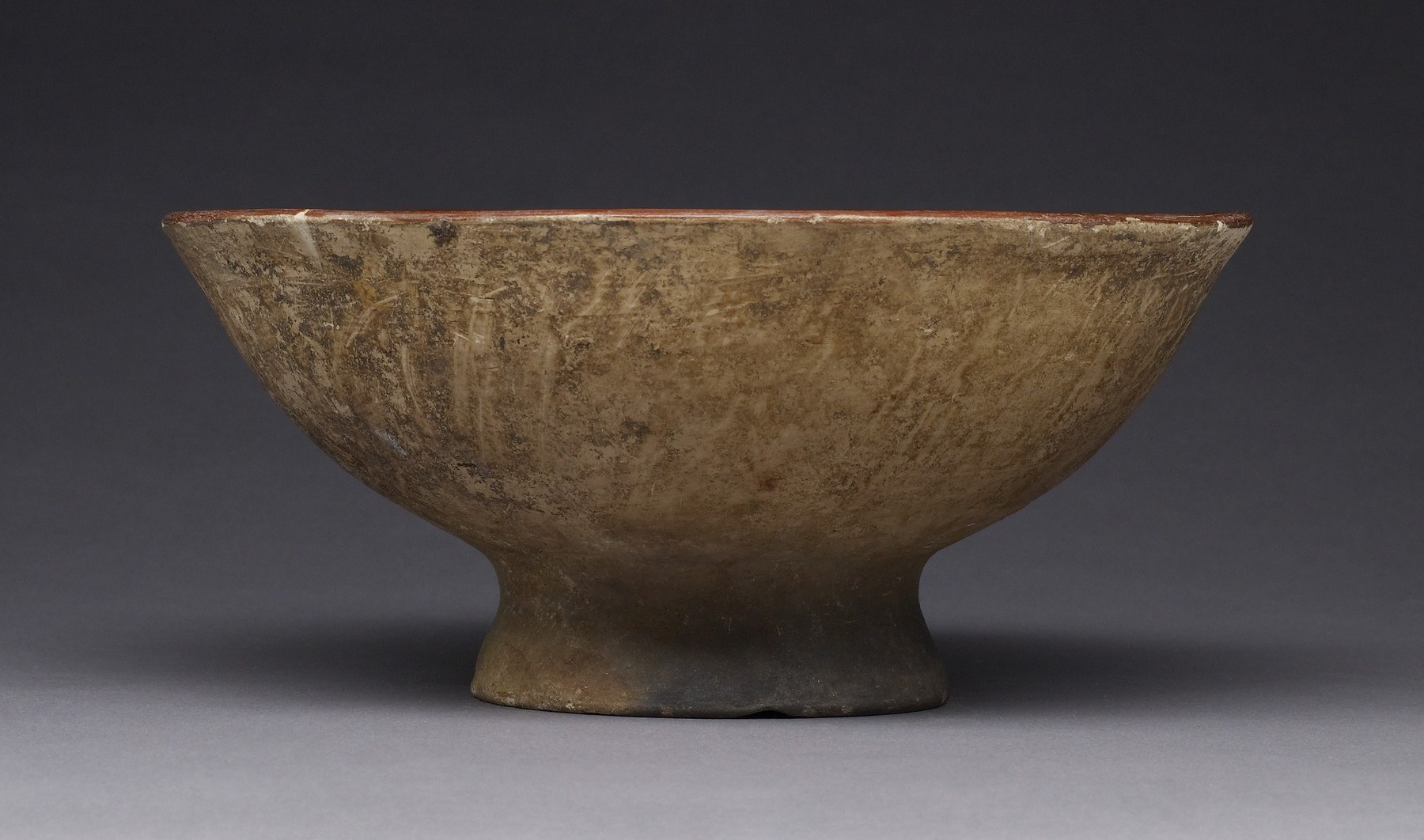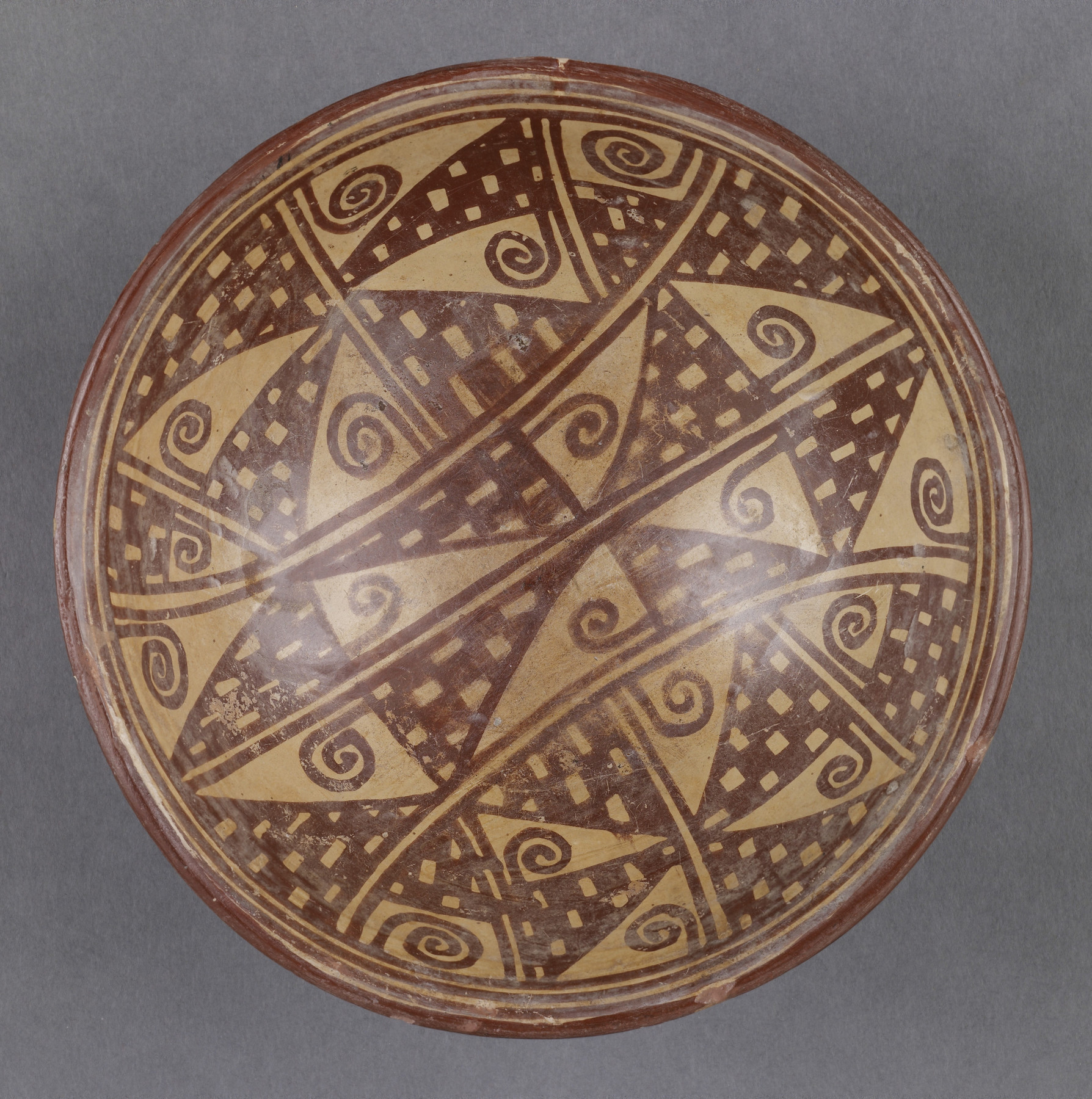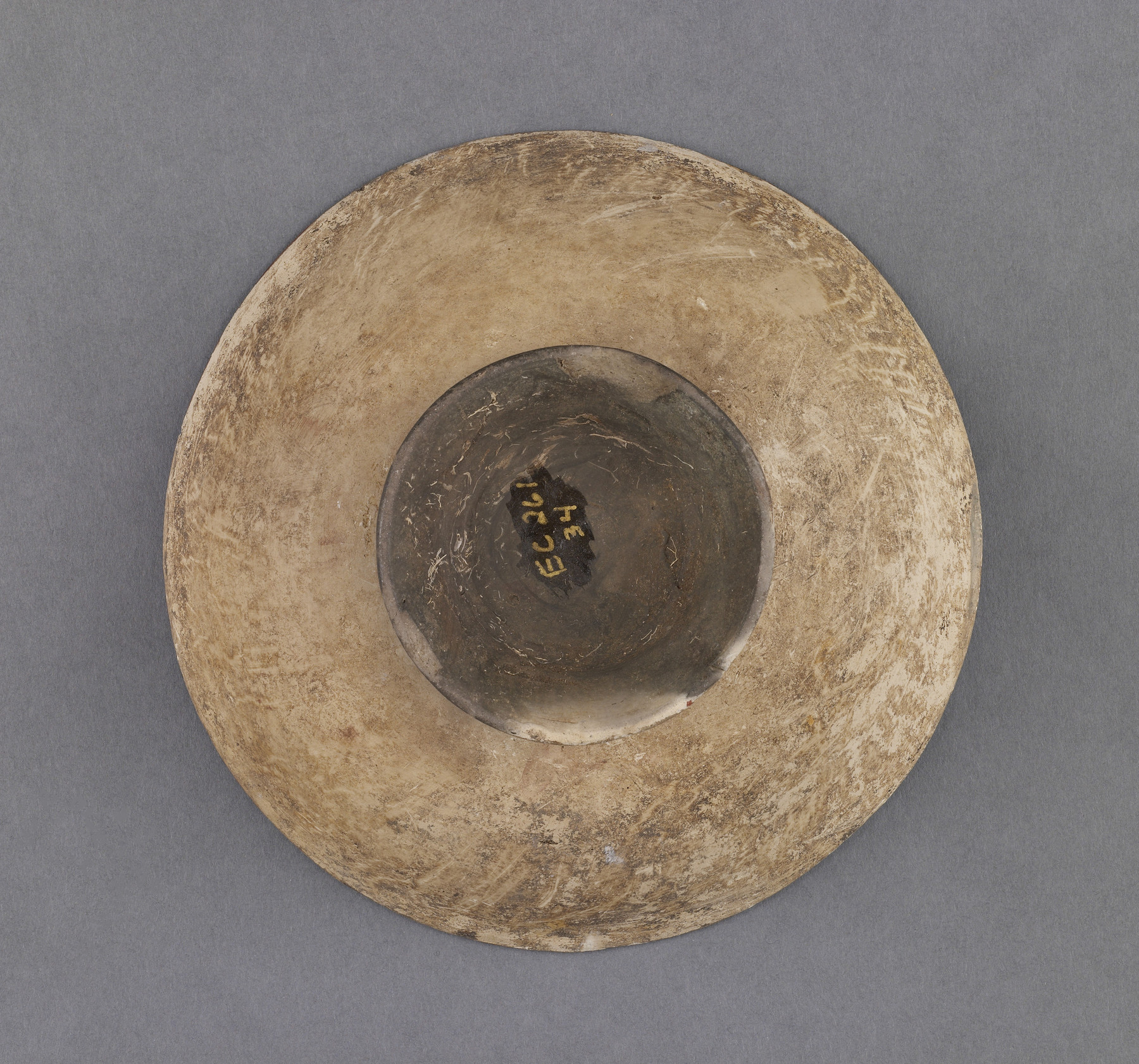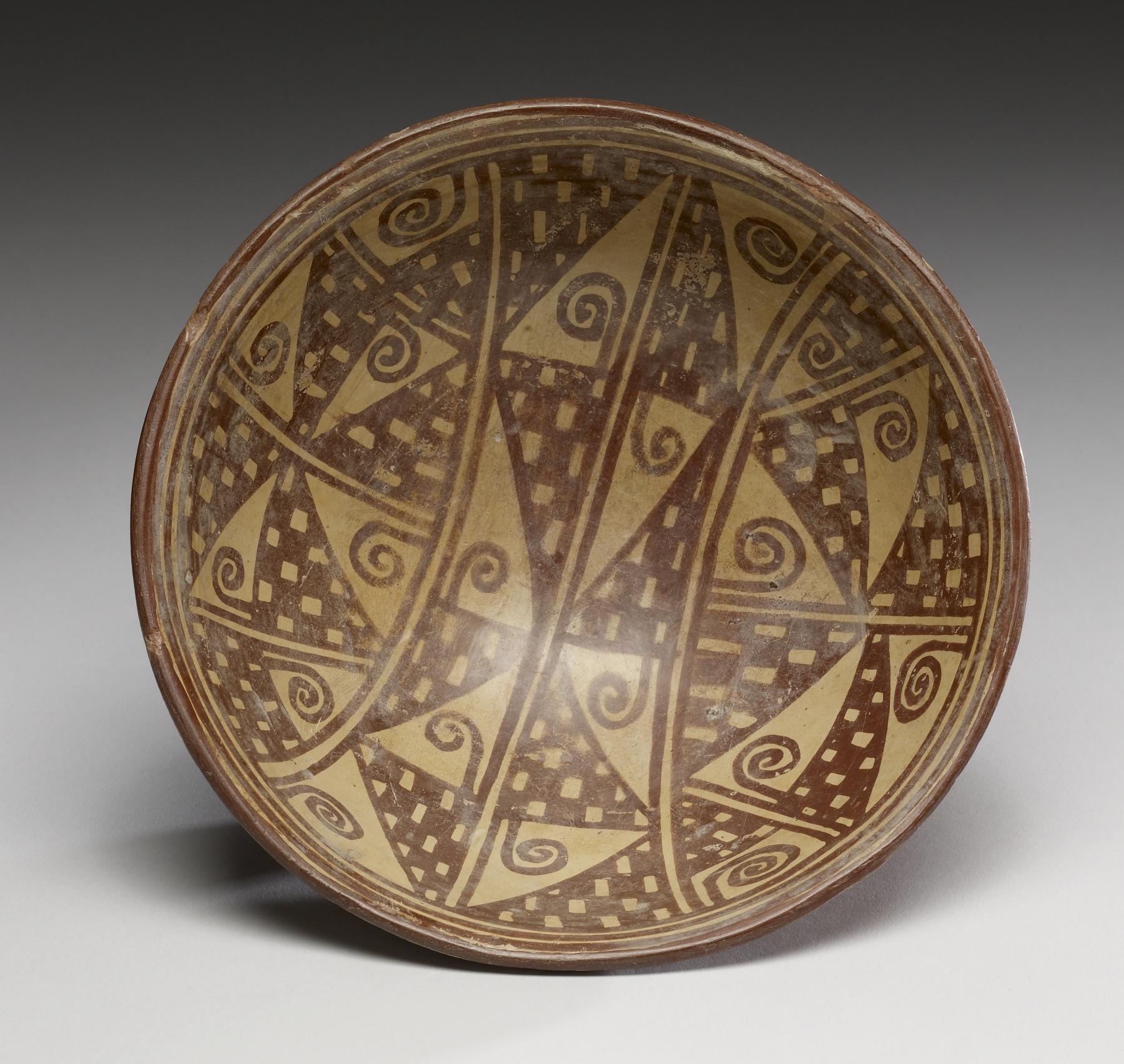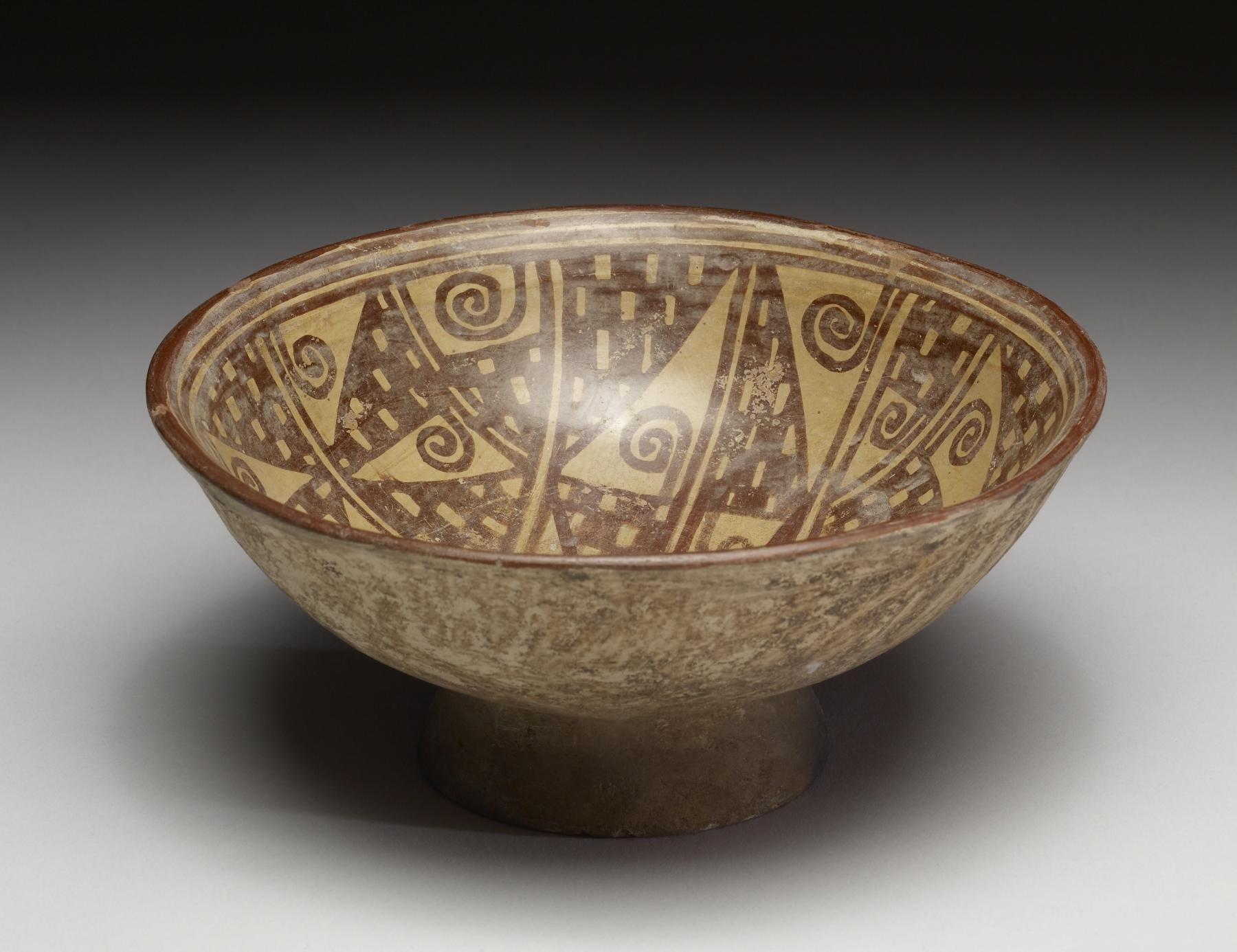Footed Dish with Animal Motifs
(Ancient Americas )
Dishes with annular supports are found throughout the Nariño- Carchí region, which straddles the international border between Colombia and Ecuador, although stylistic differences distinguish highly localized sub-traditions. The Tuza complex, found at archaeological sites in the upper Guaitara River region and perhaps related to the historical Pastos people of the area, is differentiated by the use of positive painting rather than negative-resist painting found elsewhere in the region. Further, Tuza decorative motifs are almost exclusively restricted to the vessel interior. The decorative format of this bowl combines embellished triangles variously arranged to create vertical and spiral forms.
Provenance
Provenance (from the French provenir, 'to come from/forth') is the chronology of the ownership, custody, or location of a historical object.
Economos Works of Art [date and mode of acquisition unknown]; John G. Bourne, 1990s, by purchase; by bequest to Walters Art Museum, 2017.
Geographies
Ecuador
(Place of Origin)
Colombia (Place of Origin)
Measurements
H: 3 11/16 x Diam: 7 11/16 in. (9.37 x 19.56 cm)
Credit Line
Bequest of John G. Bourne, 2017
Accession Number
In libraries, galleries, museums, and archives, an accession number is a unique identifier assigned to each object in the collection.
In libraries, galleries, museums, and archives, an accession number is a unique identifier assigned to each object in the collection.
2009.20.277

